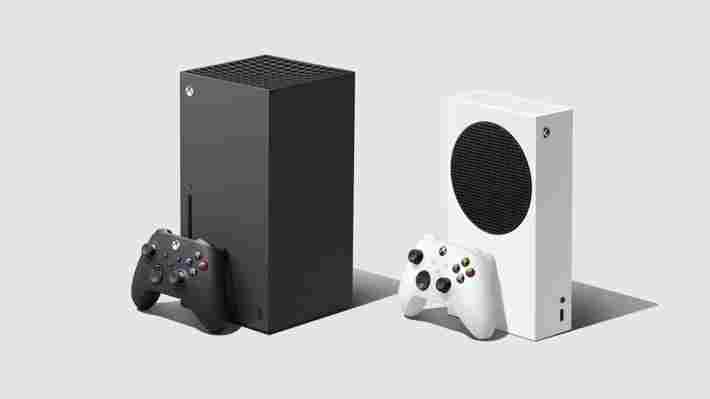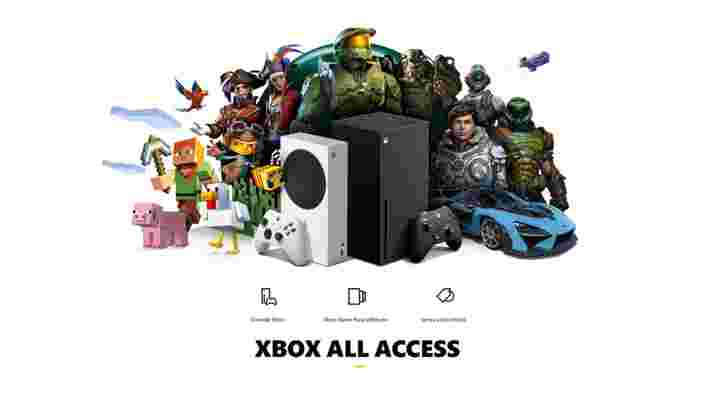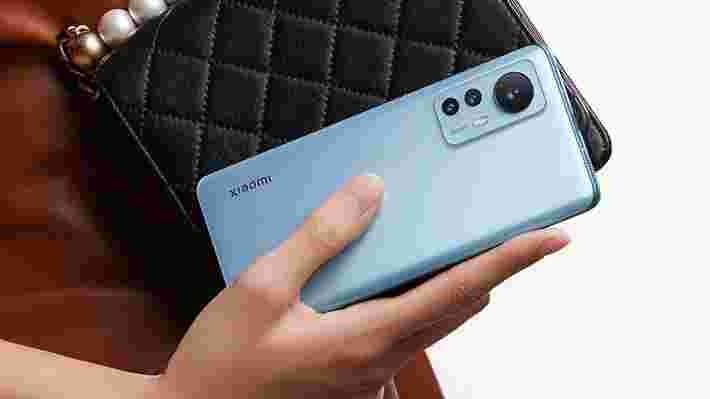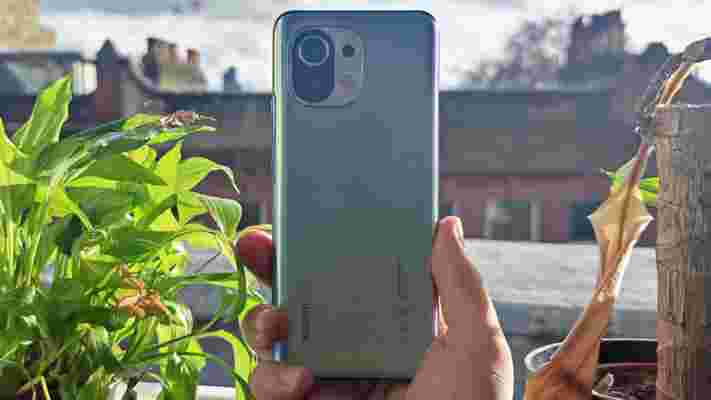Space has always been a geopolitical battlefield, from the first Soviet satellite to the brewing space race between China and the United States. This time, thanks to SpaceX, NASA can sidestep the thorny issue of just-announced Russian sanctions following that country's invasion of Ukraine.
Among the sanctions that US President Joe Biden announced on Thursday was a ban on high tech and aerospace technology exports, which will almost certainly disrupt cooperative space efforts between the two countries, especially as it relates to the operation of the International Space Station (ISS).
While there are still a host of implications for space to consider given the recent developments, there is at least one thing NASA won't have to worry about: awkwardly asking to hitch a ride aboard a Russian rocket to get its astronauts to the ISS.
Until recently, NASA relied on Russia to get to space
After the retirement of NASA's Space Shuttle program in 2011, NASA had no way to ferry astronauts from US soil to outer space, so it had to turn to Roscosmos, Russia's space agency, and book passage on its Soyuz rockets and at a pretty hefty premium.
While this in itself isn't nefarious – we actually want these kinds of mixed flights between nations – it was expensive since the Soyuz rocket isn't a very efficient system and bears a lot of similarities to NASA's space operations prior to 2012.
The Soyuz family of rockets (first introduced in 1966) are "expendable" rockets that are discarded and either burn up in the atmosphere or crash down into the ocean after using up their fuel.
Understandably, this is an expensive proposition, and NASA was paying Roscosmos as much as $90 million for a seat on its rocket launches. This also put NASA in a pinch, since riding on the rocket of a geopolitical rival is subject to any number of choke points where Russia could effectively cut off NASA's access to space in the event of a conflict, like, say, Russia invading Ukraine.

SpaceX's Dragon Crew blasted off just in time for NASA
Given the cost of expendable rocket systems and the risk of paying a rival space agency for rocket flights, it's understandable that NASA would look for a better solution.
It hasn't been cheap, either. NASA settled on two companies to compete for the chance to return astronauts to space from US soil: SpaceX and Boeing.
NASA spent billions of dollars in contracts with both companies to build up to crewed space flights, with SpaceX being the first of the two in 2020 to have its crew capsule certified for ferrying astronauts into space and docking with the ISS.
Boeing, on the other hand, has been unable to get its Starliner crew capsule to successfully dock with the ISS , much less bring a crew up there. Were NASA to have relied on long-time partner Boeing for crewed missions, it would still be waiting for Boeing to prove its capsule could do the job right now, which would make Thursday's sanctions announcement a major headache for the agency.
It's almost certain that any sanctions would have exempted NASA space passengers on Russian rockets if that was the only available option. However, Russia could still have made negotiating such flights a major pain point. Think a $90 million ticket was expensive? There's no reason why Russia couldn't have doubled or tripled that price right now.
Fortunately, having funded SpaceX to the tune of more than $5 billion over the past several years, NASA doesn't have to worry about the politics of war and peace keeping its astronauts grounded indefinitely.
Will Roscosmos be cut off from the next generation of space technology?
Not only does SpaceX keep NASA from making uncomfortable and expensive deals with Roscosmos right now, but Roscosmos stands to lose even more than an important source of revenue.
First, SpaceX provides a cheaper alternative for NASA, so the revenue stream Roscosmos was making off NASA has dried up entirely, with the last NASA contracted flight on a Soyuz rocket taking off in 2020. That was effectively easy money that Roscosmos could put towards building rockets and improving its systems. Now that money will have to come from elsewhere.
Loss of space ferry income isn't Roscosmos' only problem. The agency recently admitted that the SpaceX Dragon Crew capsule is safe enough for Russian cosmonauts, opening the door for Russia to book passage on SpaceX flights instead of using its own aging, expendable rocket system.
Those missions could now be threatened by US sanctions, which forbid the export of high-tech and aerospace products to Russia, specifically targeting that nation's advanced technology sectors, like space operations.
We've reached out to NASA's space operations office for clarification on whether Thursday's sanctions will keep cosmonauts off SpaceX flights and will update this story if we hear back from the agency.
Not only will SpaceX likely be prevented from doing business with Roscosmos as many had hoped, it's hard to see how Roscosmos will be able to develop reusable rockets themselves when the US currently has a monopoly on that technology.
The savings that reusable rockets provide frees up a lot of money for more ambitious space missions, like a moon base and even missions to Mars. Reusable rockets also make private low Earth orbital development possible. Being cut off from that technology in the near-to-medium term pretty much surrenders low Earth orbit development to the US and a very ambitious China.
Roscosmos could absolutely develop that technology on its own – they have some of the best rocket scientists in the world, after all, and they are already working on a partially reusable Soyuz-7 rocket design – but that will take a long time to get going, all the while SpaceX and others are pushing the technology envelope even further.
In the meantime, Roscosmos is working to just get to where SpaceX was five years ago, and even in the best of circumstances such operations weren't expected before 2026. Now with sanctions on their tech and space operations sector, that window is going to be pushed back even more.
As a result, Russia risks losing out on what is set to become Space 2.0, as the US and China take the lead on the next generation of space technology and development.
Is the Xbox Series S worth it in 2022?
We’re well over a year into the ninth generation of consoles at this point, but is the Xbox Series S worth it in 2022?
Today’s consumers arguably have more choice than ever before when it comes to picking a gaming system these days. The PS5 and Xbox Series X demonstrate the power of 4K gaming to a monumentally impressive degree, while the Nintendo Switch continues to do its own thing with semi-regular, high-quality first and third-party exclusives.
Then there’s the relatively humble Xbox Series S, which can be summarized as a halfway house between the power of last gen’s Xbox One X , and some of the higher-end features of today’s consoles, including a lightning-fast SSD, 120Hz support and access to Xbox Series X/S enhanced titles.
But if you’re out shopping for a brand new console, it’s potentially quite easy to dismiss the Xbox Series S as merely an entry-level system – the Master System to the Mega Drive / Genesis, if you will. But that really couldn’t be further from the truth. Yes, the Xbox Series S costs considerably less than a PS5, Xbox Series X, and even the Nintendo Switch OLED , but it’s nonetheless a powerful and capable console that fully embraces a bang-for-your-buck philosophy.
So what are the pros and cons of the Xbox Series S? Why is it a worthwhile alternative to its more powerful sibling? And does it even matter that the console lacks a disc drive? All this and more will be answered below, so keep reading to see if the Xbox Series S is worth it today and if it’s the right console choice for you.
Xbox Series S is available now
If the Xbox Series S is indeed still worth it in 2022, then, an important factor to consider is if you can even actually buy one. With the ongoing chip shortages greatly diminishing PS5, Xbox Series X, and PC graphics card availability, how does the Xbox Series S fare in being a console you can feasibly buy?
Thankfully, you’ve got a much better chance at buying an Xbox Series S as opposed to its more expensive alternatives. Across many major retailers, the Xbox Series S is in stock far more regularly, making it by far the easiest current-gen console to actually get your hands on. We’d even argue it’s easier to find in the US than the Nintendo Switch OLED, currently.
If you’re tired of chasing stock updates for the Xbox Series X, then, buying a Series S instead isn’t so much as cutting your losses as it is getting access to all of Xbox’s bells and whistles at the tradeoff of having slightly lower specs.
Xbox Series S and Xbox Series X: a quick comparison

When looking at the Xbox Series S, arguably the first thing that’ll jump out is its relatively low price tag. At $299 / £249, it’s by far the most affordable current-gen machine on the market - much cheaper than the Xbox Series X, PS5, and the PS5 Digital Edition.
That should be no surprise, though, at least upon initial inspection. After all, while the Series S boasts some pretty impressive specs, it isn’t quite as powerful as the Series X. But not drastically so, at least not in terms of the overall gaming experience it provides. Yes, the Series X boasts a processor capable of 12 teraflops as opposed to the Series S’s 4 teraflops, and the X is capable of running games at a crisp 4K resolution, while Series S tends to output at 1080p or 1440p (some titles can hit 4K like Ori and the Will of the Wisps, but it's an outlier).
The Series S’s SSD is also substantially smaller at 512GB, compared to the 1TB SSD found in the Series X. That’s arguably the biggest downside to owning a Series S, especially when you factor in that the console is digital-only - no disc drive means physical copies can’t be played on Series S, though even physical games require you to install the data onto a hard drive nowadays.
However, both consoles share more similar features than you might think. Both can output at a 120Hz refresh rate and feature an auto low-latency mode that minimizes wireless controller input lag.
Additionally, both boast support for Dolby Atmos and Dolby Vision for truly immersive sound and HDR picture quality. Variable refresh rate is also supported by both systems, meaning that moment-to-moment gameplay remains smooth on compatible smart TVs, and 1440p resolution is also an option.

Xbox Series S also includes many of the same quality-of-life features as its more powerful sibling. Smart Delivery is an excellent feature that, with applicable games, automatically detects the console you’re playing on, and downloads the most optimal version of that game to your system. No need to specifically choose a version that might be suboptimal for your console.
Xbox Series S owners can enjoy the same library of backward compatible titles from across all Xbox generations, too, some of which are even available on Xbox Game Pass . And speaking of older generations, if you have old Xbox One accessories like controllers or headsets, they’ll still work on the Xbox Series S.
One other aspect to consider is its size, and that’s an area where the Xbox Series S actually has an advantage over its larger sibling. The Xbox Series S is Microsoft’s smallest console to date, so much so that it’s relatively easy to move around the house, or to take with you on a trip . And if space is an issue, or you want something more discrete in your home cinema setup, the Xbox Series S is a great option for that.
The Xbox Series S might not have a premium price tag, then, but that doesn’t mean it isn’t a prize contender. Not only is it powerful enough to become your main console of choice, but it’s also a fantastic secondary console to have if you already get plenty of gaming on PS5, Switch, or PC. It’s also fundamentally at a next-gen console, as proven by the fact it can run The Matrix Awakens: Unreal Engine 5 Experience .
A Game Pass powerhouse

If there’s any reason to opt for an Xbox Series S over other consoles, though, it would be to access the fantastic Xbox Game Pass subscription service at a lower cost of entry. While the base Xbox Game Pass subscription will cost you a monthly fee of $9.99 / £7.99, this regularly updated catalog of games can be downloaded and played with no limits.
The Xbox Series S has a reputation as being a Game Pass machine, then. As the console has no optical disc drive, you instead need to rely on digital purchases to get your gaming fix. But thanks to a service like Xbox Game Pass, loads of titles are immediately available to play at the cost of one monthly sub.
Of course, such a vast collection of games will soon fill up that 512GB SSD, so if you are planning on buying an Xbox Series S, we’d also recommend investing in an additional external SSD like the official Seagate Xbox Storage Expansion Card , which adds roughly 1TB more to your console’s storage. These days, the card can be bought for much less than its original eye-watering retail price, so it’s well worth looking into if you’re looking to download plenty of games with Xbox Game Pass.
Is the Xbox Series S worth it?
The Xbox Series S is absolutely still worth buying in 2022. Microsoft’s wallet-friendly console boasts many of the same quality features as the Series X, is much easier to actually buy in the first place, and is arguably the easiest entry point to accessing the incredible Xbox Game Pass and Xbox Game Pass Ultimate subscription services.
But it is worth noting that the Series S isn’t without its drawbacks. As mentioned earlier, the relatively small amount of storage on the SSD is lamentable, especially considering the Series S is a digital-only machine. That’s really the biggest issue with the console in our minds, with the less powerful processor (compared to the Series X) and 1440p resolution target for gaming are only slight drawbacks at best.
So if you’re in the market for a new console, and either can’t afford an Xbox Series X or are simply tired of waiting for stock to appear, don’t count out the Xbox Series S. Not only will you save yourself a lot of money and time, you’ll end up owning one of Microsoft’s best consoles to date.
Xiaomi 12 vs Xiaomi Mi 11: has shrinkage hit Xiaomi’s flagship line?
The Xiaomi 12 was announced at the very end of 2021, setting it on a course to become one of the first flagship phones of 2022.
It could also turn out to be one of the finest. After all, the Xiaomi Mi 11 was one of our favorite smartphones of last year, earning a ringing endorsement in our 4.5-star review.
We haven’t had a chance to go hands-on with Xiaomi 12 just yet, but we do have all the key specifications – and a fair few press shots. Here’s how it’s shaping up to its illustrious predecessor.
Xiaomi 12 vs Xiaomi Mi 11 price and availability
The Xiaomi 12 was announced on December 28, and rolled out in China on December 31. We’re likely looking at February or March for a global launch, though that remains to be officially confirmed.
It would more or less match the launch schedule of the Xiaomi Mi 11 if so. The Mi 11 was first announced in China on December 28, 2020, and received a global launch in February 2021.
Prices for the Xiaomi 12 start from CNY3,699 in China, which converts to around $580/ £430 /AU$800. The Xiaomi Mi 11 started from £749 / AU$1,099 (around $1,057) for the 128GB model, while the 256GB model launched for £799 (around $1,128).
While price conversions never work out as directly as indicated, the Xiaomi 12 still appears likely to launch for less money than the Mi 11 did. We’ll discuss potential reasons why in the following sections.

Design
The Xiaomi 12 is a much smaller phone than the Xiaomi Mi 11 overall. It measures just 152.7 x 69.9 x 8.2mm, compared to the Mi 11’s 164.3 x 74.6 x 8.1mm.
At 179g, it’s also 17g lighter than its older brother. At this early stage, however, we have to say that we prefer the design of the Xiaomi Mi 11.
From the front, both phones have adopted curved display edges, which look great, and both screens are coated in tough Gorilla Glass Victus. However, the main aesthetic differences can be found on the back.

At the time of its launch, the Mi 11’s stepped, curved camera module stood out in an increasingly copycat industry. It’s a little disappointing, then, to note that the Xiaomi 12 has reverted to a rather generic slab-like rectangle of a camera module. It’s a bit 2020.
We’ll have to go hands-on to find out for sure, but we like the look of the Xiaomi Mi 11 better at this early stage.
Display
Related to that size difference, the Xiaomi 12 has a much smaller display than its brother. We’re talking 6.28 inches compared to 6.81 inches.
Both are OLEDs with 120Hz refresh rates, but the older Xiaomi Mi 11 wins on three other counts. It’s much sharper, with a 1440 x 3200 (QHD+) resolution, whereas the Xiaomi 12 display has a mere 1080 x 2400 (FHD+) resolution.
Naturally, that aforementioned size difference means that you’re unlikely to notice a massive deficiency in sharpness. Still, the Xiaomi Mi 11 retains a higher 515ppi pixel density, compared to the Xiaomi 12’s 419ppi.

The other way in which the older phone’s display tops its younger brother is brightness. The Xiaomi Mi 11 can hit an impressive 1,500 nits, whereas the Xiaomi 12 can only hit 1,100 nits.
Finally, the Xiaomi Mi 11 packs a 480Hz touch sampling rate. From what we can see, only the Xiaomi 12 Pro makes that mark in the current range.
Camera
Things diverge a little on the camera front.
The Xiaomi 12 packs a 50MP 1/1.56-inch wide sensor with an f/1.9 aperture. By contrast, the Xiaomi Mi 11 is led by a 108MP 1/1.33-inch wide sensor with an f/1.9. Both are supported by OIS.
It seems to be all equal on the ultra-wide front, with both phones packing a 13MP 1/3.06-inch f/2.4 123-degree sensor.
Both seem to share the same 5MP telemacro camera, too, which is capable of taking some impressive extreme close-up shots without having to put your phone right up to the subject. Our reviewer called it “the star of the show,” so we have no qualms with its return in the Xiaomi 12.
What we do have a bit of an issue with is the continued lack of a telephoto lens. There was no optical zoom in the Xiaomi Mi 11, and there won’t be one in the Xiaomi 12 either.
Still, if the Xiaomi 12 does hit a significantly lower price, it will be much easier to overlook.
In terms of shot quality, we found that the Xiaomi Mi 11 took pretty decent, if not class-leading shots thanks to Xiaomi’s AI image processing smarts and pixel-binning techniques.
We’d hope that the Xiaomi 12 doesn’t roll back the quality too much, despite the change in main sensor. After all, it’s set to pack a superior SoC (see the next section), which brings with it enhanced image processing.
One area in which the Xiaomi 12 seems to surpass its predecessor with its selfie cam: a higher megapixel 32MP front camera. The Xiaomi Mi 11 only has a 20MP equivalent, though of course, you should never judge a camera by its pixel count.
Specs and performance
The Xiaomi 12 hasn’t massively impressed in spec terms so far, but it’s quite clearly faster than the Xiaomi Mi 11.
This is the first phone to use Qualcomm’s Snapdragon 8 Gen 1 chip, which will be the go-to flagship choice for 2022. We haven’t had a chance to put it through its paces as yet, but expect it to top the Snapdragon 888 in all respects.
That’s the same Snapdragon 888 that powers the Xiaomi Mi 11, of course. We’ll let you know once we’ve had the opportunity to test the Xiaomi 12’s relative performance, and will report back here.
Both phones offer 8GB or 12GB of RAM, and both also offer 128 and 256GB storage variants. There’s no real difference in the memory capacity stakes, then.
In terms of media playback, both phones pack stereo speakers tuned by audio specialist Harman Kardon.
Battery
There isn’t an awful lot of difference when it comes to battery capacity. The Xiaomi 12 features a 4,500mAh cell, which is only fractionally smaller than the Xiaomi Mi 11’s 4,600mAh cell.
Given that the newer phone has a smaller, less sharp and less bright display, this could give it a boost in terms of stamina. Especially when you also factor in that more efficient Snapdragon 8 Gen 1 chip.
This would be most welcome, since our reviewer found the Xiaomi Mi 11’s battery life to be underwhelming. They would typically only manage to last a full day if they kept their usage to the minimum.
The Xiaomi 12 also promises to improve matters when it comes to charging speeds. It comes with a 67W charger in the box, whereas the Xiaomi Mi 11 only had a 55W plug. This was still enough to get you from 0% to 100% in around 45 minutes, but the Xiaomi 12 will do so in a claimed 39 minutes.
Both phones support 50W wireless charging, which remains nice and swift by 2022 standards.
Takeaway
We haven’t had a chance to go hands-on with the Xiaomi 12 yet, but it might just feel like a rather disappointing roll back from the Xiaomi Mi 11 in certain respects.
That’s because Xiaomi appears to be pursuing a slightly different market with the Xiaomi 12. It isn’t a straight replacement for the Xiaomi Mi 11 at all.
The Xiaomi Mi 11 walked and talked like a fully fledged flagship, but with one or two smart compromises enabling a slightly lower price. The Xiaomi 12, by comparison, is a much more compact phone with a scaled back screen and (possibly) camera, and we’re expecting a lower price as a result.
If that’s the case, then the Xiaomi 12 will present an intriguingly attainable flagship option. The only question is, will we love it as much as the Xiaomi Mi 11? Will it balance price and performance just right?
Watch this space.